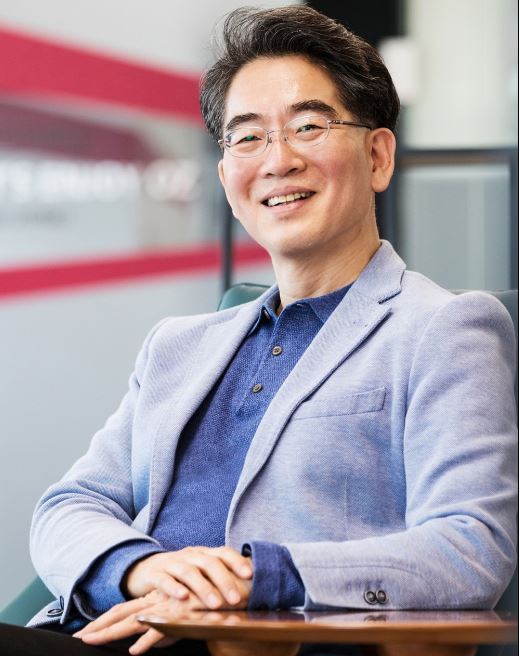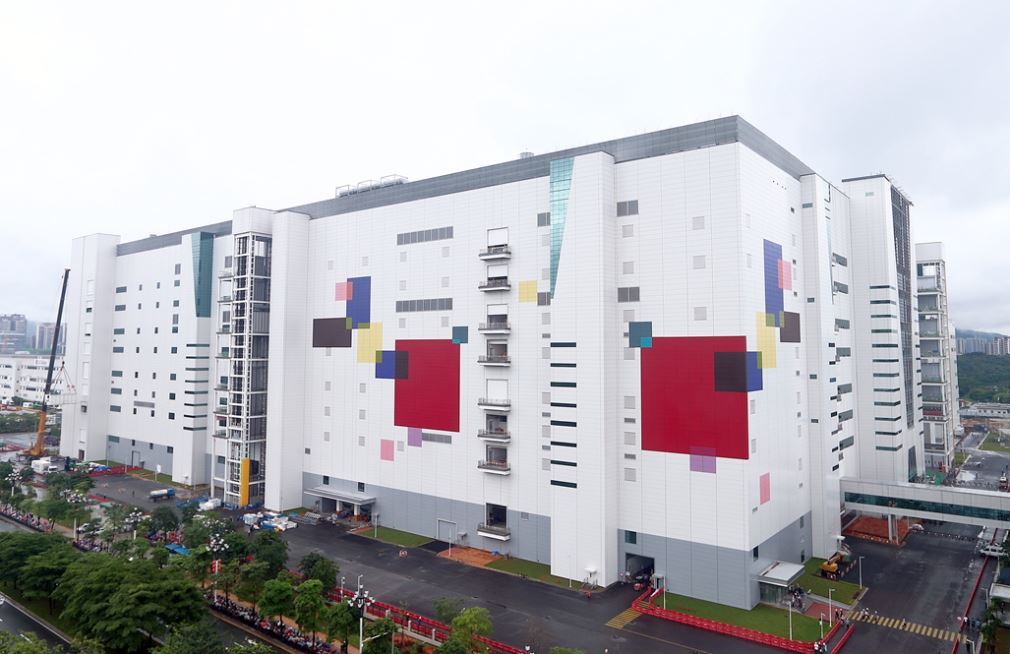LG Display CEO says Guangzhou plant will be new driver for OLED biz
‘In terms of 55-inch OLED screens, LGD now has annual capacity of 10 million TV panels’
By Lim Jeong-yeoPublished : July 23, 2020 - 19:32

LG Display on Thursday heralded the much-awaited opening of its new organic light-emitting diode panel manufacturing plant in Guangzhou, China.
The Guangzhou plant enables full-fledged mass-production of 8.5-generation OLED panels for LG Display, and increases the company’s monthly OLED production capacity to 130,000 panels.
LG Display’s CEO Jeong Ho-young flew to China to attend the kickoff ceremony in Guangzhou. Jeong arrived a day ahead of the event, and was exempt from the mandatory self-quarantine requirement thanks to a fast-track process for business travelers. Jeong returns to South Korea on Friday.
“Large-size OLED panels are an essential axis for future growth,” Jeong stressed.
LG Display has applied new technologies that will diversify the product portfolio, and the company plans to bolster cross-industrial collaboration.
“With the new Guangzhou plant in full force, LG Display’s large-size OLED business will accelerate in growth, both in quantity and in quality,” said CEO Jeong.
“LG Display will strive to cement our leadership in the OLED panel business through a continued drive to excel in technology and product diversity,” Jeong said.
Chief Production Officer and Vice President Shin Sang-mun, Vice President Yang Jae-hun and head of LG Display’s China operations Park Yoo-seok flanked Jeong.
LG Display’s Guangzhou plant has a production capacity of 60,000 panels a month. This addition to the plant in Paju, Gyeonggi Province, which has a monthly output of 70,000 panels, increases LG Display’s monthly production capacity to 130,000 OLED panels.
If speaking only of 55-inch panels, LG Display will be able to produce 10 million OLED TV panels a year.
LG Display explained that the Guangzhou plant is strategically built for high efficiency and productivity for large OLEDs, meaning it has the potential for supersized high-resolution screens that have added value.
The Guangzhou plant’s operation launch had been stalled due to the COVID-19 pandemic’s worsening effects. The company has dispatched roughly 900 engineers to China on four planes since March, in an attempt to ready the plant despite the virus.
LG Display said it plans to manufacture 48-inch, 55-inch, 65-inch and 77-inch panels at the Guangzhou plant. If global demand increases, the company will expand its current capacity of 60,000 panels per month to as many as 90,000 panels per month.

According to market researcher Omdia, the OLED TV panels market is on an upward graph. In 2020, estimated demand for OLED TV panels marked 4.4 million units. That figure is forecast to surpass 12 million in 2025.
LG Display’s Guangzhou entity is officially LG Display High-Tech China Co. Ltd.
It has assets of 2.6 trillion won, of which LG Display is responsible for 70 percent of the investment. The province of Guangzhou has a 30 percent stake.
Also on Thursday, LG Display announced its second quarter earnings report. Despite the COVID-19 pandemic, LG Display made a 12 percent on-quarter revenue increase to 5.3 trillion won ($4.4 billion), but marked an operating loss of 517 billion won. This is the sixth consecutive quarter that LG Display is in the red.
LG Display’s Chief Financial Officer Seo Dong-hee explained that the COVID-19 uncertainties had prompted the company to adjust production downward, which increased the burden of maintenance costs, compounded by overall industrial contraction, including lower smartphone sales.
However, there are certain offsetting factors such as more working and studying from home, leading to increased electronics sales, Seo said, vowing to return with a better earnings report in the third quarter.
By Lim Jeong-yeo (kaylalim@heraldcorp.com)








![[Graphic News] More Koreans say they plan long-distance trips this year](http://res.heraldm.com/phpwas/restmb_idxmake.php?idx=644&simg=/content/image/2024/04/17/20240417050828_0.gif&u=)
![[KH Explains] Hyundai's full hybrid edge to pay off amid slow transition to pure EVs](http://res.heraldm.com/phpwas/restmb_idxmake.php?idx=644&simg=/content/image/2024/04/18/20240418050645_0.jpg&u=20240419100350)





![[From the Scene] Monks, Buddhists hail return of remains of Buddhas](http://res.heraldm.com/phpwas/restmb_idxmake.php?idx=652&simg=/content/image/2024/04/19/20240419050617_0.jpg&u=20240419175937)

![[KH Explains] Hyundai's full hybrid edge to pay off amid slow transition to pure EVs](http://res.heraldm.com/phpwas/restmb_idxmake.php?idx=652&simg=/content/image/2024/04/18/20240418050645_0.jpg&u=20240419100350)

![[Today’s K-pop] Illit drops debut single remix](http://res.heraldm.com/phpwas/restmb_idxmake.php?idx=642&simg=/content/image/2024/04/19/20240419050612_0.jpg&u=)